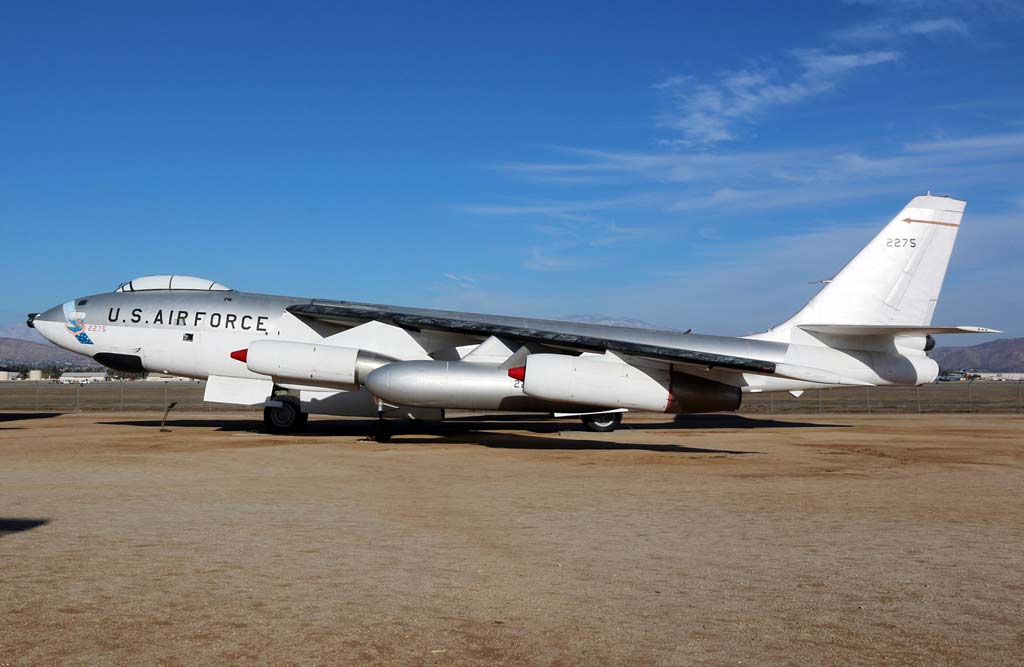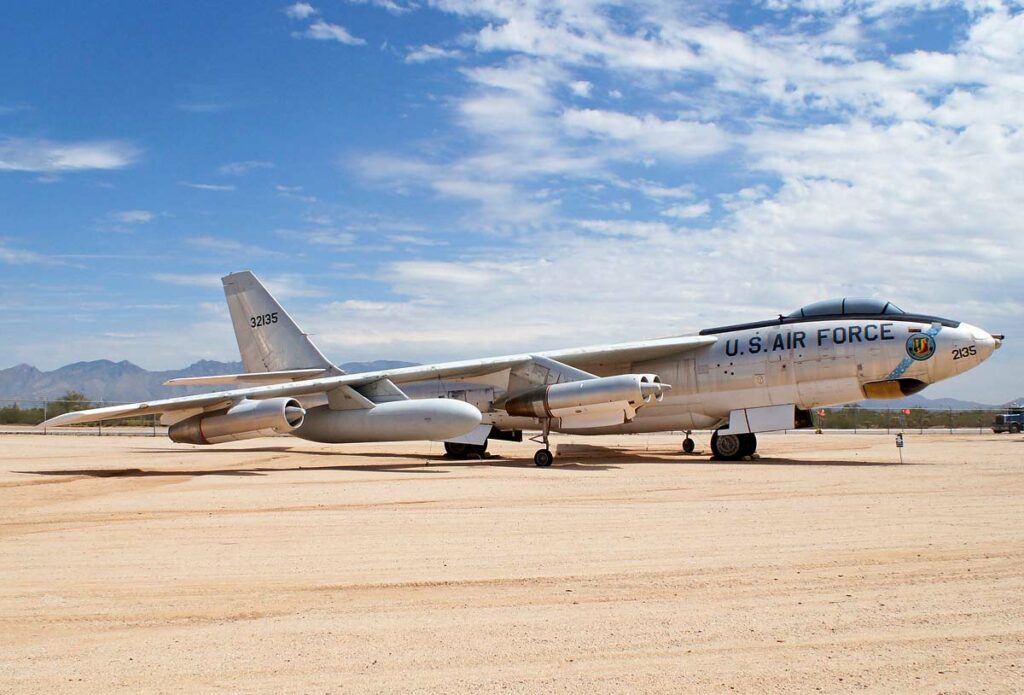The Boeing B-47 Stratojet, a strategic jet bomber, was pivotal in the Cold War for its high-speed, high-altitude capabilities and sleek design.
The Boeing B-47 Stratojet was a landmark American jet bomber, integral to the strategic airpower of the United States during the Cold War. It represented a significant leap in technology and performance, setting the standard for subsequent bomber designs. The B-47 Stratojet marked a turning point in bomber aircraft design, embodying the transition from propeller-driven bombers to jet-powered ones. It played a critical role in the USAF’s strategic bombing capabilities during the Cold War.

History of the Development of the Boeing B-47 Stratojet
In the context of the early Cold War, the United States sought to advance its strategic bombing capabilities in response to the growing Soviet threat. This era demanded a new generation of bombers capable of delivering nuclear payloads with speed and precision.
Boeing launched the B-47 Stratojet program in response to an Air Force requirement for a jet-powered bomber. The design team, led by George Schairer, incorporated revolutionary concepts like swept wings and podded engines.
The B-47 first flew on December 17, 1947. This marked a new era in aviation, showcasing a design far removed from the World War II bombers. It was a response to the strategic need for a bomber that could evade Soviet defenses, capitalizing on high speed and altitude.
The B-47 did not receive a NATO nickname, as it was a U.S. strategic asset and not part of NATO’s tactical forces.
Design of the Boeing B-47 Stratojet
The Boeing B-47 Stratojet’s design was revolutionary. It featured a sleek, swept-wing design, which reduced drag and increased efficiency at high speeds. The aircraft was powered by six General Electric J47 turbojet engines, mounted in pairs under the wings.
With a wingspan of 116 feet (35.36 meters) and a length of 107 feet (32.61 meters), the B-47 was a large aircraft. Its unique design included a bicycle-type landing gear for weight distribution and fuselage-mounted outrigger wheels to stabilize the wings.
One drawback of the B-47 was its complexity, which made maintenance challenging. Additionally, its range and payload were limited compared to later bombers like the B-52.
Performance of the Boeing B-47 Stratojet
The performance of the B-47 was a significant improvement over previous bombers. It could reach a top speed of about 607 mph (977 km/h) and had a service ceiling of 33,100 feet (10,089 meters). The aircraft had a range of approximately 4,000 miles (6,437 km).
Compared to its contemporaries, the B-47 outperformed the Soviet Tu-16 in speed but fell short in range and payload. The B-47’s ability to fly at high speeds and altitudes made it less vulnerable to enemy air defenses.

Military Use and Combat of the Boeing B-47 Stratojet
The B-47 was primarily armed with nuclear bombs, reflecting its strategic role in the Cold War. It was never used in active combat, but it played a critical role in deterrence, maintaining a constant state of readiness during the height of the Cold War.
The B-47 participated in numerous Cold War-era operations, including reconnaissance missions and Operation Chrome Dome, which involved maintaining airborne bombers 24/7 as a nuclear deterrent.
The Stratojet did not compete directly in combat but was essential in the strategic balance of power. It was not sold to other countries, given its strategic importance to the United States.
The B-47 was eventually phased out and replaced by more advanced bombers like the B-52 Stratofortress, which offered greater range, payload, and versatility.
The Boeing B-47 Stratojet stands as a pivotal aircraft in military aviation history. Its innovative design and performance characteristics revolutionized bomber technology, laying the groundwork for future strategic bombers. The B-47’s role in shaping the strategic air power of the United States during the Cold War remains a significant part of its legacy.
Back to the Bombers section.